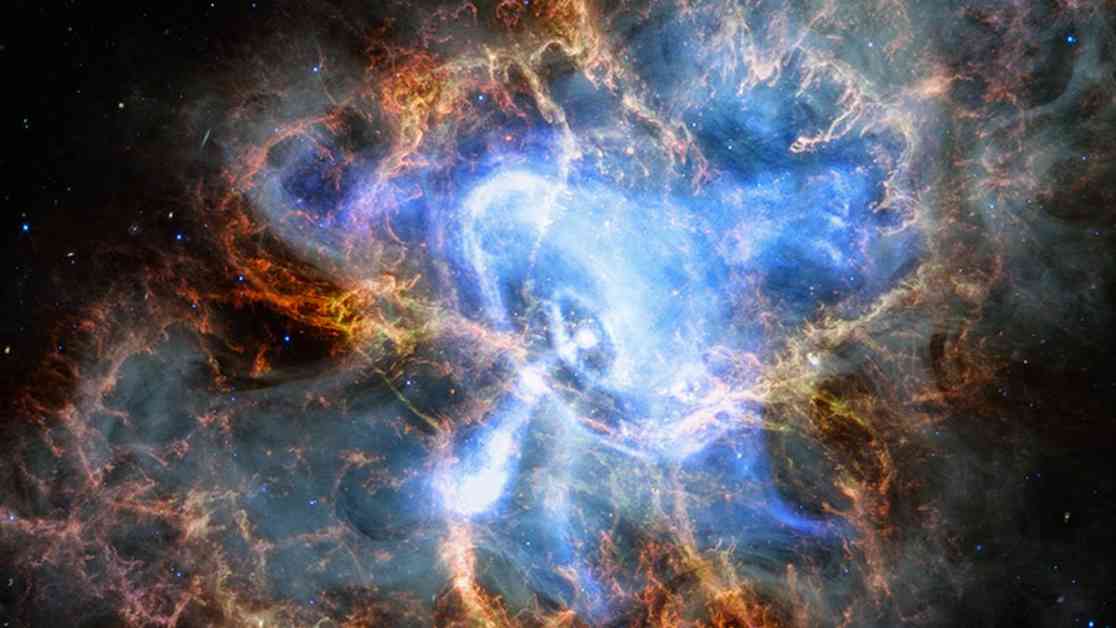The Crab Nebula, also known as M1, is a supernova remnant located 6,500 light-years away in the constellation Taurus. On June 3, 2024, a stunning image of the Crab Nebula was captured by combining data from the James Webb Space Telescope (JWST) and the Chandra X-ray Observatory. This composite image provides more insight into the dense neutron star at the center of this bright supernova remnant in the night sky.
The Crab Nebula is the remnants of a star that exploded in A.D. 1054, catching the attention of viewers around the world. This unexpected event left behind a dense neutron star surrounded by a nebula of gas. The neutron star, known as a pulsar, rotates around 30 times per second, emitting radiation like a lighthouse. Chandra’s observations show that the neutron star’s energy has created a shockwave, causing a high-speed wind of matter and antimatter particles to move through the nebula, which spans 11 light-years across.
Chandra’s data has also been used to create a time-lapse movie showing the movement of the Crab Nebula’s ring and X-ray jets over 22 years. Astronomers are planning to gather more data on the pulsar to further understand the changes taking place.
This new image of the Crab Nebula provides valuable insights into the dynamics of this supernova remnant and the behavior of the neutron star at its core. The collaboration between the James Webb Space Telescope and the Chandra X-ray Observatory continues to expand our understanding of the universe and the celestial objects within it. Stay tuned for more discoveries and advancements in the field of astronomy as scientists delve deeper into the mysteries of space.



